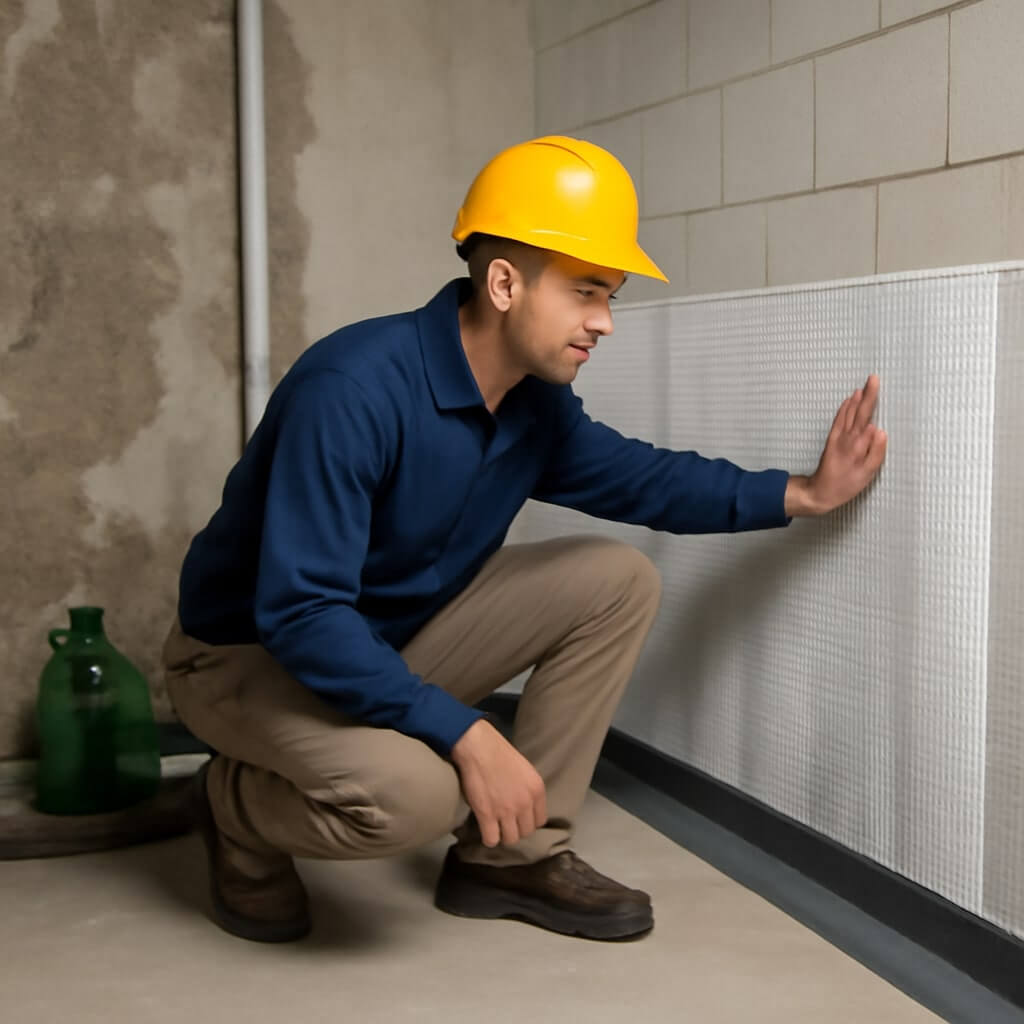When it comes to selecting the right basement waterproofing solution, there are key factors you need to take into account. Start by evaluating your basement’s current condition and identifying any moisture sources. From there, you can explore various waterproofing methods tailored to your needs. Whether you choose to tackle the project yourself or hire professionals can greatly impact the outcome. Understanding long-term maintenance and costs is also essential. Let’s break down these important tips to guarantee your basement stays dry.
Key Takeaways
- Assess your basement’s current condition thoroughly to identify visible damage and moisture levels before selecting a waterproofing method.
- Identify the source of moisture to target specific issues like cracks, leaks, or poor drainage for effective waterproofing solutions.
- Explore various waterproofing methods, including interior drainage systems, exterior sealing, sump pumps, and French drains to find the best fit for your needs.
- Consider your skill level when deciding between DIY solutions and hiring professionals, as complex issues often require expert intervention.
- Evaluate long-term maintenance costs and budgeting needs for your chosen waterproofing method to ensure ongoing effectiveness and financial stability.
Assess Your Basement’s Current Condition
Before you tackle any waterproofing solutions, it’s essential to assess your basement’s current condition.
Start with a thorough basement inspection to identify any visible signs of damage, such as cracks, mold, or dampness.
Begin by inspecting your basement for visible damage like cracks, mold, or dampness to assess its condition.
Next, conduct a moisture assessment to determine humidity levels and potential water sources.
Use a moisture meter to check walls and floors, and pay attention to any musty odors, which often indicate hidden moisture issues.
Document your findings to create a clear picture of your basement’s health.
Identify the Source of Moisture
Once you’ve assessed your basement’s condition, the next step is to identify the source of moisture.
Look for common moisture sources like cracks in walls, leaky pipes, or poor drainage systems. Check for signs of water damage, such as mold, mildew, or peeling paint.
Pay attention to the ground around your home—ensure that it’s sloped away from the foundation. Additionally, inspect windows and doors for gaps that could let in water.
Explore Different Waterproofing Methods
As you explore different waterproofing methods, it’s essential to choose the right approach for your basement’s specific needs. Two popular options are interior drainage and exterior sealing. Interior drainage systems channel water away from the foundation, while exterior sealing prevents water intrusion from the outside.
| Method | Description |
|---|---|
| Interior Drainage | Collects and diverts water from inside |
| Exterior Sealing | Applies a waterproof barrier outside walls |
| Sump Pumps | Pumps out water collected in a basin |
| French Drains | Directs surface water away from the home |
| Waterproof Coating | Adds a protective layer to basement walls |
Evaluate each to find the best fit for you.
Consider Professional Help vs. DIY Solutions
Choosing the right waterproofing method is just the beginning; deciding whether to tackle the project yourself or hire a professional can greatly impact the outcome.
DIY techniques can save you money, but they often require time, skills, and tools you mightn’t have. If you’re confident in your abilities, you can manage simple tasks, but complicated issues often need professional contractors.
They bring expertise and experience, ensuring the job’s done right the first time. Weigh the complexity of your basement’s issues against your skill level and resources to determine the best approach for your waterproofing project.
Evaluate Long-Term Maintenance and Costs
While you may be enthusiastic to waterproof your basement, it’s essential to contemplate the long-term maintenance and costs associated with your chosen method.
Start by evaluating your long-term budgeting needs; some solutions require more upfront investment but less frequent maintenance, while others may be cheaper initially but demand regular upkeep.
Determine the maintenance frequency for your selected system—will you need to check it monthly or annually?
Factor these costs into your overall budget to avoid surprises down the line. Understanding the financial commitment upfront will help you maintain a dry basement without unexpected expenses in the future.
Conclusion
In conclusion, selecting the right basement waterproofing solution involves a clear understanding of your basement’s condition and moisture sources. By exploring various methods and weighing the pros and cons of DIY versus professional help, you can make an informed choice. Don’t forget to take into account long-term maintenance and costs to guarantee your solution remains effective. With careful planning and the right approach, you can keep your basement dry and protected for years to come.

